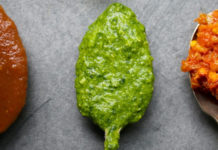It’s important to note that there is no universal mandate or obligation for individuals to kiss on Christmas Eve. The idea of kissing on Christmas Eve is not a requirement but rather a tradition that has evolved over time in various cultures. Traditions surrounding holidays often carry cultural significance and can vary widely, and the choice to participate in them is ultimately a personal one.
The concept of kissing under the mistletoe, a plant with white berries that has been associated with various myths and traditions, is one of the most well-known practices related to Christmas Eve or Christmas celebrations. However, the origins of this custom are rooted in folklore and may differ across cultures. Here are some reasons and explanations for the association between kissing and Christmas Eve:

1. Symbol of Love and Fertility:
Mistletoe has historical significance in various cultures, often symbolizing love, fertility, and vitality. The custom of kissing under the mistletoe is believed to have originated from ancient Celtic and Norse traditions, where the plant was considered sacred and associated with peace and goodwill.
2. Norse Mythology:
In Norse mythology, mistletoe was associated with Frigg, the goddess of love and beauty. According to the myth, Frigg’s son, Balder, was killed by an arrow made of mistletoe. As a symbol of her grief, Frigg declared that mistletoe would never again be used as a weapon and that anyone passing under it should receive a kiss in a gesture of goodwill.
3. Victorian England:
The tradition of kissing under the mistletoe gained popularity during the Victorian era in England. It became a part of Christmas celebrations and was often included as a festive decoration. The custom evolved to dictate that a kiss should be exchanged under the mistletoe, contributing to the romantic and joyful atmosphere of the holiday season.
4. Romantic Tradition:
Over time, the act of kissing under the mistletoe transformed into a romantic tradition. Couples and individuals embraced the idea of stealing a kiss beneath the mistletoe during Christmas parties or gatherings. It became a lighthearted and playful way to express affection and celebrate the festive spirit.
5. Cultural Variations:
While mistletoe-related kissing traditions are prevalent in some cultures, others may not observe this custom. Cultural variations play a significant role in shaping holiday traditions, and not all regions or communities incorporate the mistletoe-kissing practice into their Christmas celebrations.
6. Personal Choice:
Participating in the tradition of kissing under the mistletoe is ultimately a matter of personal choice. Some individuals may enthusiastically embrace the custom as a fun and festive activity, while others may choose not to participate for various reasons, such as cultural differences, personal preferences, or individual comfort levels.
7. Creating Meaningful Moments:
For many, the tradition of kissing under the mistletoe is a way to create meaningful and memorable moments during the holiday season. It adds a touch of romance and joy to Christmas celebrations and provides an opportunity for people to express their affection for one another.
8. Reinforcing Bonds:
The act of sharing a kiss under the mistletoe is often seen as a way to reinforce bonds between couples, family members, or friends. It is a simple yet symbolic gesture that signifies love, connection, and unity during a time dedicated to togetherness and goodwill.
9. Festive Atmosphere:
The presence of mistletoe and the tradition of kissing under it contributes to the overall festive atmosphere of Christmas Eve and Christmas celebrations. The joyous and light-hearted nature of the custom aligns with the spirit of the season, emphasizing love, generosity, and the joy of sharing special moments with others.
10. Evolving Traditions:
Traditions associated with holidays are dynamic and can evolve. While the kissing under the mistletoe tradition has historical roots, its practice may vary across individuals, families, and communities. Some may embrace the tradition enthusiastically, while others may choose to focus on different aspects of Christmas celebrations.







